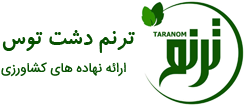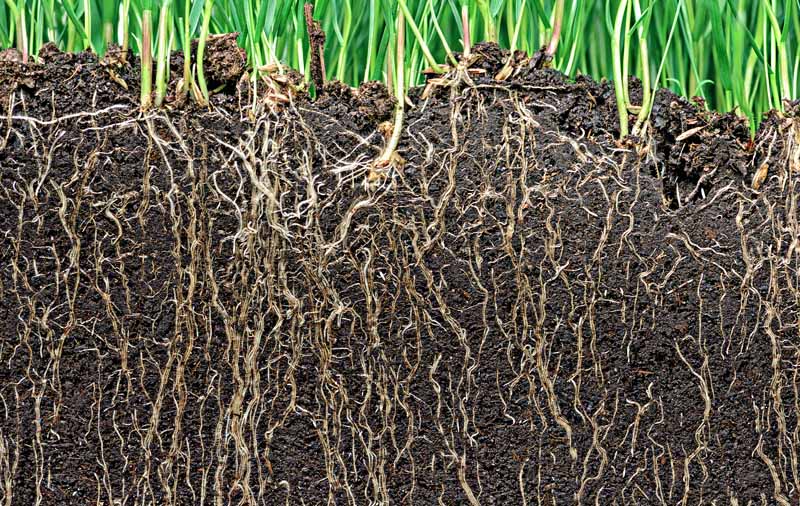- شما هیچ آیتمی در سبد خرید خود ندارید
- قیمت کل: 0 تومان
Nitrogen is a vital macronutrient, and the main form of inorganic nitrogen that plants take up from well-aerated soil is nitrate (NO3− [N]; O’Brien et al., 2016; Wang et al., 2018). Beyond its role as a nitrogen source, NO3− acts as a signaling molecule during various developmental processes, such as the determination of root architecture, a process directly influenced by root stem cell differentiation (Perilli et al., 2012; Wierzba and Tax, 2013; O’Brien et al., 2016; Wang et al., 2018). However, little is known about the molecular mechanism underlying the adaptive responses of root stem cells to NO3− limitation.
To explore how root stem cells respond to NO3− limitation, we compared the differentiation of distal stem cells (DSC) in roots (Supplemental Methods S1) under normal or low external NO3− levels. In general, most roots (∼۶۷%) of 6-d-old wild-type Arabidopsis (Arabidopsis thaliana) seedlings grown on medium with 10 mM NO3− (full N) contained only a single DSC layer, as indicated by Lugol staining, which stains only differentiated starch-containing columella cells in the roots (Fig. 1, A and C). Germination on medium with 0.05 mM NO3− (low N) promoted DSC differentiation, as evidenced by the absence of DSC in ∼۳۰% of seedlings (Fig. 1, A and C). In addition, low N resulted in the absence of expression of the DSC-specific marker J2341 in ∼۳۵% of seedlings, a feature not observed in the wild-type seedlings grown on full N (Fig. 1, B and C), confirming the results of Lugol staining.

Fig1:Low nitrate influences stem cell activity. A to C, DSC differentiation in roots as revealed by Lugol staining (A) and J2341 expression (B). Six-day-old wild-type seedlings germinated on medium with 10 mM NO3− (full N; FN) or 0.05 mM NO3− (low N; LN). Most roots of seedlings grown on full N had typical single-tiered DSC, whereas low N induced complete DSC differentiation in ∼۳۰% of seedlings (A). Lugol staining and J2341 expression to monitor DSC differentiation (A and B) were quantified in C (n ≥ ۵۵ roots). White and blue arrowheads mark the QC and DSC, respectively. Lugol-stained starch indicates differentiated columella cells. Nondifferentiated DSC is present between the QC and starch granules. Scale bars = 10 μm. D and E, Effect of NAA on DSC differentiation in roots. Treatment with NAA largely rescued low-N-enhanced DSC differentiation in a dose-dependent manner (D; n ≥ ۵۰ roots). Note that yuc1D, which contains high levels of endogenous auxin, showed significantly reduced columella differentiation under nitrate-limited conditions (E; n ≥ ۵۰ roots). F to K, Expression analysis of WOX5, PLT1, and PLT2 in the root tips. Low N repressed the expression of WOX5::ERGFP (F), PLT1::PLT1:YFP (H), and PLT2::PLT2:YFP (J). The fluorescence intensity was quantified in G, I, and K. Scale bars = 20 μm. L and M, Role of WOX5 and PLTs in low-N-mediated DSC differentiation. The number of undifferentiated DSC increased in 35S::WOX5-GR roots that were germinated on full N with increasing amounts of DEX. When WOX5 expression was induced by 0.1 μM DEX treatment, we observed less DSC differentiation in the roots grown on low N compared with that of the non-DEX-treated plants. However, low-N-promoted DSC differentiation was not observed when WOX5 expression was strongly induced by 1.5 μM DEX treatment (L). The overexpression of WOX5 severely inhibited root DSC differentiation, as revealed by the presence of multiple tiers of DSC cells (L). The wox5 and plt1 plt2 seedlings grown under both full-N and low-N conditions exhibit more DSC differentiation compared with that of the wild type. DSC differentiation was suppressed in the wild-type roots grown on low-N medium supplemented with 0.3 μM NAA, but not in wox5 or plt1 plt2 roots (M). DSC differentiation was quantified in L and M (n ≥ ۵۰ roots). N, Differentiation status of DSC in chl1-12 mutant roots. chl1-12 DSC was less sensitive to low N as compared with that of the wild-type seedlings (n ≥ ۷۷ roots). O and P, Increased WOX5 and PLT1 transcription in chl1-12 mutant on low N as detected by reverse transcription quantitative PCR analysis. The expression of these genes in the wild type was set to 1. Q, A schematic model of regulation of the root DSC activity in response to low N stress. Low N promotes CHL1/NRT1.1/NPF6.3 protein level and thus potentially represses auxin accumulation, which in turn inhibits WOX5 and PLTs transcription, ultimately stimulating DSC differentiation in the root tips. Activation and repression are represented by arrows and blunt-end line, respectively. Dashed blunt-end line with the question mark represents CHL1/NRT1.1/NPF6.3-mediated potential suppression of auxin accumulation in the primary root tip. Error bars in C–E and L–P represent ±se of three replicates. Error bars in G, I, and K represent ±se from at least 18 seedlings and results are representative of three independent experiments. * P < 0.05; ** P < 0.01 Student’s t test. Representative images are shown.
As reported, auxin signaling regulates DSC differentiation (Ding and Friml, 2010) and provision of NO3− increases the signal from DR5::GUS expression in the root tips (Vidal et al., 2010). Consistent with these observations, we found that low N suppressed auxin accumulation, as revealed by expression analysis of DR5rev::GFP and DII-VENUS in transgenic seedlings that had been transferred from full N to low N and grown for 2 d (Supplemental Fig. S1, A and B). Accordingly, DSC were absent in ∼۲۱% of wild-type seedlings under the same experimental conditions, specifically following 2 d of low-N treatment (Supplemental Fig. S1C). These findings suggest that a gradual reduction in auxin levels is closely related to enhanced DSC differentiation in response to low N.



